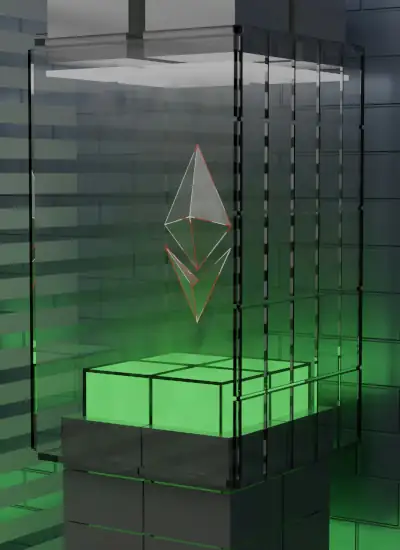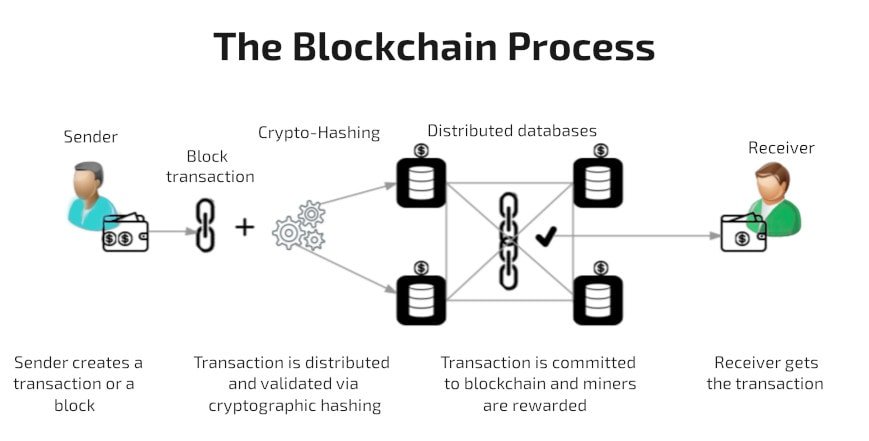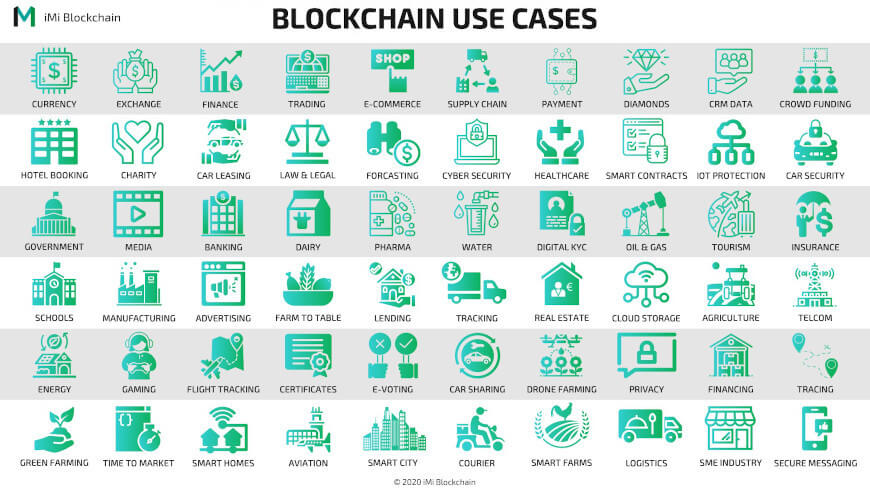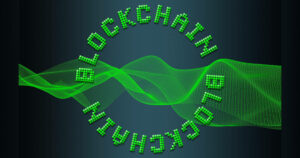
Key Highlights
- Blockchain technology is a decentralized system that canize the way transactions are recorded and verified.
- Cryptocurrency is a digital payment system that allows for secure and instant peer-to-peer transactions.
- Understanding the basics of blockchain and cryptocurrency is essential for anyone interested in this emerging technology.
- Learning about blockchain and cryptocurrency requires essential tools and resources, as well as a dedicated learning environment.
- Mastering the basics of blockchain involves understanding its structure, design, and the concept of decentralization.
- To understand cryptocurrency, one must explore the Bitcoin network, learn about blockchain and cryptocurrency, and understand cryptocurrency wallets and exchanges.
- Blockchain development and cryptocurrency trading are two areas that offer exciting career opportunities.
- Educational resources and community engagement play a crucial role in enhancing learning and staying up-to-date with the latest developments.
- Blockchain and cryptocurrency have practical applications in various industries, including supply chain management, medical records, and everyday transactions.
- Exploring career opportunities in blockchain and cryptocurrency requires staying updated with emerging roles and acquiring the necessary skills and certifications.
Introduction
To learn about blockchain and cryptocurrency is not hype. The two buzzwords have gained significant attention in recent years. These emerging technologies have the potential to revolutionize the way we conduct transactions, store data, and even interact with each other. Understanding the basics of blockchain and cryptocurrency, including their potential uses for trading financial assets, is crucial for anyone looking to explore the potential of these technologies and leverage the opportunities they present.
This technology is a distributed ledger system that enables secure and transparent transactions without the need for a central authority. It consists of a network of computers, known as nodes, that work together to record and verify transactions. Each transaction is stored in a block, which is linked to the previous blocks in a chain-like structure. This decentralized nature makes it resistant to tampering and fraud, making it ideal for applications where trust and transparency are essential.
Cryptocurrency, on the other hand, is a digital payment system that operates independently of traditional banking systems. It allows for secure and instant peer-to-peer transactions, eliminating the need for intermediaries such as banks. Cryptocurrencies are stored in digital wallets and can be used to purchase goods and services online, making them a popular choice for online transactions. The most well-known cryptocurrency is Bitcoin, but there are thousands of other cryptocurrencies, each with its unique features and applications.
In this blog, we will explore the basics of blockchain and cryptocurrency, the relationship between the two, and provide a step-by-step guide to mastering these technologies. We will also discuss the practical applications, career opportunities in these fields, and valuable educational resources for learning and professional development. So let’s dive in and learn how to fast-track your understanding of blockchain and cryptocurrency basics.
- 1. Key Highlights
- 2. Introduction
- 3. Learn More About Blockchain Technology
- 4. Learn More About Crypto
- 5. Preparing to Learn About Blockchain and Cryptocurrency
- 6. Step-by-Step Guide to Mastering Blockchain Basics
- 7. Know More About Cryptocurrency – Step-by-Step
- 8. Exploring the World of Blockchain Development
- 9. Diving Into Cryptocurrency Trading
- 10. Leveraging Educational Resources for Enhanced Learning
- 11. Engaging with the Blockchain and Crypto Community
- 12. Practical Applications of Blockchain and Cryptocurrency
- 13. Career Opportunities in Blockchain and Cryptocurrency
- 14. Conclusion
- 15. FAQ
Learn More About Blockchain Technology
To learn more about blockchain and cryptocurrency is crucial. It has the potential to transform various industries. By understanding the basics of this technology, including its use in cryptocurrencies, you can gain insight into how transactions are recorded, verified, and secured in a decentralized network without the need for a central authority. This empowers individuals and organizations to transact directly, securely, and transparently. Key concepts of blockchain technology include distributed ledger, cryptographic techniques, and the elimination of a central authority. Let’s delve deeper into the foundational aspects of this technology and its use in cryptocurrencies.

Share this image on your site:
Understanding Blockchain
Blockchain is a distributed ledger system that enables the secure and transparent recording of transactions. It is a decentralized network of computers that work together to validate and verify transactions without the need for a central authority. In a blockchain, transactions are grouped into blocks, which are then added to a chain of previous blocks, creating an immutable record of all transactions. This digital ledger ensures that transactions are secure, transparent, and tamper-proof.
One of the key features of blockchain is its ability to eliminate the need for a central authority or intermediary, such as a bank or government. Instead, transactions are validated and verified by a network of computers, known as nodes, that work together to reach a consensus on the validity of each transaction. This consensus is achieved through cryptographic techniques, ensuring the integrity and security of the network. Each verified transaction is then added to a new block in the chain, creating a transparent and immutable record of all transactions.
Blockchain technology has the potential to revolutionize industries such as finance, supply chain management, healthcare, and more. Its decentralized nature and transparent record-keeping make it an ideal solution for applications that require trust, security, and transparency. By understanding the concept and its role in the financial system, you can unlock the potential of this groundbreaking technology and explore its various applications.
Key Principles and How Blockchain Works
Blockchain technology operates on several key principles that enable its secure and decentralized nature. These principles include distributed ledger, cryptographic techniques, and the elimination of a central authority.
The distributed ledger is a fundamental aspect of the technology. It ensures that transactions are recorded and verified by multiple participants or nodes in the network. Each node maintains a copy of the ledger, and any new transaction must be agreed upon by a consensus mechanism, such as proof-of-work or proof-of-stake. This distributed nature of the ledger makes it resistant to tampering and fraud.
Cryptographic techniques play a crucial role in securing transactions and ensuring the integrity of the blockchain. These techniques include hashing, digital signatures, and encryption. Hashing algorithms are used to convert transaction data into a fixed-size string of characters, providing a unique identifier for each transaction. Digital signatures are used to verify the authenticity and integrity of transactions. Encryption is used to protect the privacy of transaction data and can be implemented through methods such as two-factor authentication on a mobile device.
By eliminating the need for a central authority, distributed ledger technology enables peer-to-peer transactions without intermediaries. This reduces transaction costs, enhances security, and increases transparency. The decentralized nature ensures that no single entity has control over the network, making it a more democratic and inclusive system.
Learn More About Crypto
Cryptocurrencies are digital currencies that operate on blockchain technology. They are an alternative to traditional currencies issued and regulated by central banks. Cryptocurrencies utilize cryptographic techniques to secure transactions and control the creation of new units. They enable secure and instant peer-to-peer transactions without the need for intermediaries such as banks. Cryptocurrencies have gained significant popularity due to their potential for financial independence, privacy, and global accessibility. In this section, you will learn more about crypto. We will explore the definition of cryptocurrencies in today’s world and the relationship between blockchain and cryptocurrencies.

Share this image on your site:
Defining Cryptocurrency in Today’s World
Cryptocurrency, sometimes referred to as crypto, is a form of digital currency that exists virtually and uses cryptography to secure transactions. Unlike traditional currencies issued by central banks, cryptocurrencies are not physical coins or paper money. Instead, they are purely digital and stored in digital wallets.
Cryptocurrencies are designed to operate independently of a central authority, such as a government or financial institution. They rely on blockchain technology, a decentralized network of computers, to verify and record transactions securely. This eliminates the need for intermediaries, such as banks, to facilitate transactions, making it possible for anyone, anywhere, to send and receive payments directly without the involvement of a third party.
Cryptocurrencies offer several advantages over traditional currencies, including lower transaction fees, faster international transfers, and increased privacy. They also provide opportunities for investment and speculation, with the potential for significant returns. An important aspect of this privacy is the protection of personal information, as cryptocurrency transactions do not require the disclosure of personal information. As the cryptocurrency market continues to evolve, more digital assets and financial products are being developed, expanding the possibilities for individuals and businesses alike.
The Relationship Between Blockchain and Cryptocurrency
Blockchain and cryptocurrency are closely intertwined, with blockchain serving as the underlying technology that enables the existence and functionality of cryptocurrencies. This technology provides the infrastructure for recording, verifying, and securing transactions, while cryptocurrencies utilize this infrastructure to enable secure and transparent peer-to-peer transactions.
Transactions involving cryptocurrencies, such as Bitcoin or Ethereum, are recorded in a blockchain, a distributed ledger that is maintained by a network of computers known as nodes. These transactions are grouped into blocks, which are then added to the chain in chronological order, thus creating an immutable record of all transactions on the Ethereum network. This process is much faster and less energy-intensive than Bitcoin’s, making it a popular choice for many users. Understanding the relationship between blockchain and cryptocurrency, specifically in the context of the Ethereum network, is crucial for those looking to learn about blockchain and cryptocurrency basics.
Cryptocurrencies leverage the decentralized and transparent nature of blockchain technology to enable secure and instant peer-to-peer transactions without the need for intermediaries, such as banks. Transactions involving cryptocurrencies are verified by the network of nodes, ensuring the integrity and security of the transactions.
In addition to facilitating transactions, this technology also enables other applications beyond cryptocurrencies. It can be used for various purposes, such as supply chain management, identity verification, and data storage. The relationship between blockchain and cryptocurrency is symbiotic, with the success and adoption of one influencing the other.
Preparing to Learn About Blockchain and Cryptocurrency
Before diving into the world of fintech, it’s essential to prepare yourself to learn about blockchain and cryptocurrency. Mainly with the necessary tools and create a conducive learning environment. Understanding the foundational concepts and acquiring the right resources will set you up for success in your learning journey. In this section, we will explore the essential tools and resources needed to learn about blockchain and cryptocurrency and discuss how to set up your learning environment for optimal learning outcomes.

Unlock Your Business Potential with Certified Blockchain Consulting!
Dive into the future of technology with our team of certified blockchain experts. Simply pick the service you need:
Personalized Advice – tailored to your business needs.
Comprehensive Training – for you and your team.
Development Services – innovative solutions from the whitepaper to the finished blockchain.
Programming – with capabilities and tools to succeed.
TALK TO THE EXPERTS TODAYEssential Tools and Resources Needed
So what are the essential tools to learn about blockchain and cryptocurrency? Here are some tools and resources that can help you kick-start your learning journey:
Online courses and tutorials: There are numerous online courses and tutorials available to learn about blockchain and cryptocurrency. These courses cover various topics, from fundamentals to advanced concepts.
Educational platforms and websites: Educational platforms and websites dedicated to blockchain and cryptocurrency provide a wealth of information, including articles, videos, and interactive learning resources. These platforms often offer forums and communities where you can engage with like-minded learners and experts.
Books and blogs: Books and blogs written by industry experts can provide valuable insights and in-depth knowledge about blockchain and cryptocurrency. They cover a wide range of topics, from the basics to advanced concepts and real-world applications.
Forums: Engaging with the community through forums and discussion boards can help you stay updated with the latest trends, news, and developments. These forums provide opportunities to ask questions, seek advice, and learn about blockchain and cryptocurrency from experienced individuals.
Cryptocurrency exchanges and wallets: To gain hands-on experience with cryptocurrencies, it is essential to set up accounts on cryptocurrency exchanges and wallets. These platforms allow you to buy, sell, and store cryptocurrencies securely.
By leveraging these tools and resources, you can create a solid foundation for your learning journey in blockchain and cryptocurrency. Creating a dedicated learning environment will further enhance your learning experience and help you stay focused and motivated throughout the process.
Setting Up Your Learning Environment
Creating a conducive learning environment is essential when embarking on your journey to learn about blockchain and cryptocurrency. Here are some tips to help you set up your learning environment for optimal learning outcomes:
Designate a dedicated learning space: Set aside a specific area where you can focus on your learning without distractions. This can be a quiet corner in your home or a designated workspace.
Gather the necessary resources: Ensure you have access to the essential tools and resources mentioned earlier, such as online courses, educational platforms, books, and forums. Organize them in a way that is easily accessible and conducive to your learning style.
Establish a learning routine: Consistency is key when it comes to learning. Establish a learning routine that works for you, whether it’s dedicating a specific time each day or setting aside dedicated learning days in your week.
Engage with the community: Take advantage of online forums, discussion boards, and social media groups dedicated to blockchain and cryptocurrency. Engaging with the community will not only expand your knowledge but also provide opportunities for networking and collaboration.
Stay motivated and track your progress: Set goals for yourself and track your progress. Celebrate milestones along the way and find ways to stay motivated, such as rewarding yourself for completing courses or reaching specific learning objectives.
By setting up a dedicated learning environment and adopting effective learning practices, you can maximize your learning potential and fast-track your understanding of blockchain and cryptocurrency basics.
Step-by-Step Guide to Mastering Blockchain Basics
Mastering the basics of blockchain is crucial for anyone looking to explore the potential of this transformative technology. In this section, we will provide a step-by-step guide to help you gain a comprehensive understanding of blockchain basics. We will explore the structure, the concept of decentralization, and the principles that underpin this technology. By following this guide, you will build a solid foundation in blockchain and be well-equipped to explore its applications further.

Step 1: Exploring Blockchain Structure and Design
To master blockchain basics, it is essential to understand its structure and design. It is a network of computers connected in a peer-to-peer network that works together to validate and record transactions. Each transaction is grouped into a block, which is then added to the chain of previous blocks in chronological order. This creates an unchangeable and transparent record of all transactions.
The structure of a blockchain involves several key components, including blocks, transactions, and consensus mechanisms. Blocks contain a list of verified transactions and a unique identifier called a hash. Transactions represent the transfer of assets or information between participants. Consensus mechanisms, such as proof-of-work or proof-of-stake, ensure that transactions are validated and recorded in a secure and transparent manner through the use of proof of work.
Understanding the structure and design of blockchain will provide insights into its decentralized nature and the principles that make it secure and tamper-proof. It lays the foundation for exploring advanced concepts and applications of this technology.
Step 2: Understanding Decentralization and Its Impact
Decentralization is a fundamental concept in blockchain technology that sets it apart from traditional centralized systems. Understanding decentralization and its impact is essential to truly grasp the potential of blockchain.
In a decentralized network, there is no single point of control or authority. Instead, decision-making and transaction verification are distributed across multiple participants or nodes in the network. This ensures that no single entity can manipulate or control the system, making it more resistant to censorship, fraud, and tampering.
Decentralization offers several advantages, including increased security, transparency, and resilience. By removing the reliance on a central authority, this technology provides a trustless environment where participants can transact directly without intermediaries. This not only reduces transaction costs but also opens up new possibilities for innovation and collaboration.
Understanding the concept of decentralization and its impact on blockchain technology will enable you to explore the full potential of this revolutionary technology and its applications in various industries.
Know More About Cryptocurrency – Step-by-Step
Now, let’s see how you can know more about cryptocurrency. Understanding the basics of cryptocurrency is essential for anyone looking to participate in the exciting world of digital currencies. In this section, we will provide a step-by-step guide to help you gain a comprehensive understanding of cryptocurrency. We will explore the Bitcoin network, different types of cryptocurrencies, and the concept of cryptocurrency wallets and exchanges. By following this guide, you will be well-equipped to navigate the world of cryptocurrency and take the next step in creating and funding your account.

Share this image on your site:
Step 1: Getting to Know Bitcoin and Altcoins
The first step and to know more about cryptocurrency is to understand Bitcoin (BTC) in detail. It is the first and most well-known cryptocurrency. It was introduced in 2009 and operates on a decentralized network known as the Bitcoin network. To understand cryptocurrency, it is important to explore the Bitcoin network and the principles that underpin it.
Bitcoin operates on a peer-to-peer network, which allows for secure and instant transactions without the need for intermediaries. Transactions are verified by a network of computers called miners, who use computational power to solve complex mathematical problems. Once verified, transactions are added to a public ledger called the blockchain.
In addition to Bitcoin, there are thousands of other cryptocurrencies, often referred to as altcoins. Each altcoin has its unique features and applications. Some popular altcoins include Ethereum, Litecoin, and Ripple. Exploring different types of cryptocurrencies will provide a comprehensive understanding of the cryptocurrency landscape and the possibilities it offers.
Step 2: Learning About Cryptocurrency Wallets and Exchanges
The second step of your learning journey is to know more about cryptocurrency wallets and exchanges play a crucial role in the storage and transfer of cryptocurrencies. Understanding how they work is essential for anyone looking to participate in the cryptocurrency market.
Cryptocurrency wallets are digital wallets that allow you to store and manage your cryptocurrencies securely. They use cryptographic techniques to protect your private keys, which are required to access and transfer your cryptocurrencies. There are different types of wallets, including software wallets, hardware wallets, and online wallets.
Cryptocurrency exchanges, on the other hand, are platforms where you can buy, sell, and trade cryptocurrencies. They provide a marketplace where buyers and sellers can transact securely. When using a cryptocurrency exchange, it is important to consider factors such as security, fees, available cryptocurrencies, and user experience.
By understanding how cryptocurrency wallets and exchanges work, you can safely store your cryptocurrencies and participate in the exciting world of cryptocurrency trading.
Exploring the World of Blockchain Development
DLT developments are a rapidly growing field that offers exciting career opportunities. In this section, we will explore the world of blockchain development, including the programming languages commonly used, the process of building blockchain applications, and the real-world applications of blockchain technology. By understanding the basics of blockchain development, you can explore this emerging field and unlock its potential for solving real-world problems.

Programming Languages for Blockchain Development
Blockchain development requires familiarity with specific programming languages and tools. These programming languages are used to build decentralized applications (dApps) and smart contracts on platforms like Ethereum.
Solidity is the most commonly used programming language for Ethereum blockchain development. It is a statically typed language with similarities to JavaScript and is specifically designed for writing smart contracts.
Other major programming languages commonly used in development include JavaScript, Python, and Go. JavaScript is often used for developing front-end applications and interacting with networks through web interfaces. Python and Go are popular choices for building supporting infrastructure and tools.
Understanding programming languages to learn more about blockchain development will enable you to write smart contracts, build dApps, and contribute to the growth of the ecosystem.
Building Your First Blockchain Application
Building a blockchain application involves several steps, from designing the application architecture to writing smart contracts and deploying them on a blockchain network. Here is a high-level overview of the process:
- Define the problem: Identify a real-world problem that can be solved or improved using blockchain technology.
- Design the application architecture: Determine the components and functionality of the application, including the user interface, smart contracts, and backend systems.
- Write smart contracts: Use a programming language like Solidity to write smart contracts that define the rules and logic of the application.
- Test the application: Conduct thorough testing to ensure the stability and security of the application. Test both the frontend and the smart contracts for functionality and security vulnerabilities.
- Deploy on a blockchain network: Choose a suitable network, such as Ethereum, and deploy your smart contracts and frontend on the network.
- Monitor and maintain the application: Continuously monitor the application for bugs, vulnerabilities, and performance issues. Regularly update and maintain the application to ensure its smooth operation.
Building your first DLT application is an exciting and rewarding experience. By following these steps, you can gain hands-on experience in blockchain development and contribute to the growth of this exciting field.
Diving Into Cryptocurrency Trading
Your last educational step when you learn about blockchain and cryptocurrency is trading. It offers opportunities for investment and profit. In this section, we will explore the world of cryptocurrency trading, including analyzing the market for trading opportunities, developing effective trading strategies, and managing risks. Whether you are a beginner or an experienced trader, understanding the fundamentals of cryptocurrency trading is essential for success in this fast-paced market.

Analyzing the Market for Trading Opportunities
Successful cryptocurrency trading requires the ability to analyze the market and identify trading opportunities. Here are some key factors to consider when analyzing the cryptocurrency market:
- Market trends: Study historical price data and identify patterns and trends that can help predict future price movements.
- Technical analysis: Use technical indicators and chart patterns to identify entry and exit points for trades. Technical analysis involves studying price charts and volume data to make informed trading decisions.
- Fundamental analysis: Consider the underlying factors that influence the value of a cryptocurrency, such as news, events, and market sentiment. Fundamental analysis focuses on understanding the intrinsic value of a cryptocurrency to make long-term investment decisions.
- Risk management: Develop a risk management strategy that includes setting stop-loss orders, diversifying your portfolio, and managing your capital effectively.
By analyzing the market and developing a trading strategy based on sound analysis and risk management, you can increase your chances of success in the cryptocurrency trading market.
Strategies for Trading Cryptocurrencies Effectively
Trading cryptocurrencies effectively requires the implementation of sound trading strategies. Here are some key strategies to consider:
- Trend following: Identify trends in the market and follow them. This strategy involves buying cryptocurrencies when they are in an uptrend and selling when they are in a downtrend.
- Breakout trading: Look for price breakouts above resistance levels or below support levels. This strategy involves entering trades when the price breaks out of a range, anticipating a significant price movement.
- Swing trading: Take advantage of short-term price fluctuations within a larger trend. This strategy involves entering trades during price retracements and exiting when the price resumes its trend.
- Dollar-cost averaging: Invest a fixed amount of money at regular intervals, regardless of the current price. This strategy can help mitigate the impact of short-term price volatility and reduce the risk of making poor timing decisions.
- Risk management: Implement risk management techniques, such as setting stop-loss orders and using proper position sizing, to limit potential losses and protect your capital.
By developing and implementing effective trading strategies, you can optimize your cryptocurrency trading and increase your chances of success in this dynamic market.
Leveraging Educational Resources for Enhanced Learning
To fast-track your education and learn about blockchain and cryptocurrency basics, it is essential to leverage educational resources that provide structured learning paths, expert guidance, and opportunities for practical application. In this section, we will explore some of the educational resources available, including online courses, webinars, books, and blogs. These resources can help you gain in-depth knowledge, enhance your skills, and stay up-to-date with the latest trends and developments. Learn about blockchain and cryptocurrency to adopt best practices for securing your digital assets.

Share this image on your site:
Online Courses and Webinars Worth Attending
Online courses and webinars provide a structured and comprehensive learning experience for anyone looking to learn about blockchain and cryptocurrency. Here are some online courses and webinars worth attending:
- Blockchain Fundamentals – Take a full blockchain course with certification that covers the fundamentals, its applications, and the basics of cryptocurrency.
- Cryptocurrency Trading – A training that focuses on principles and strategies like cryptocurrency trading classes, including technical analysis, risk management, and trading psychology.
- Smart Contract Development – A course that guides you through the process of blockchain coding and deploying smart contracts on platforms like Ethereum.
Free blockchain webinars are another valuable educational resource that offers opportunities to learn from industry experts and gain insights into the latest trends and developments in this space. Look for webinars hosted by reputable organizations and experts in the field.
By attending online courses and webinars, you can not only learn about blockchain and cryptocurrency. You will gain a comprehensive understanding, learn from industry experts, and enhance your skills in this rapidly evolving field.
Books and Blogs for Self-Study
Books and blogs are valuable resources for self-study and further exploration to learn about blockchain and cryptocurrency. Here are some recommended books and blogs:
- “Mastering Blockchain” by Imran Bashir – This book provides a comprehensive guide, covering topics such as consensus algorithms, smart contracts, and real-world applications.
- “Building Wealth with Crypto” by Marcel Isler – This book unlocks the secrets of cryptocurrency and embraces the future of finance.
- iMi Blockchain – iMi is a leading platform to learn about blockchain and cryptocurrency. Their blog features info and news articles, analysis of the latest trends, developments, and market insights.
- Cointelegraph – Cointelegraph is a popular cryptocurrency news platform that covers a wide range of topics and market trends.
By reading books and following reputable blogs, you can stay updated with the latest developments, gain insights from industry experts, and deepen your understanding. When you start to learn about blockchain and cryptocurrency it will be a never-ending journey.
Engaging with the Blockchain and Crypto Community
Engage to learn about blockchain and cryptocurrency with your favorite community. It is a valuable way to stay connected, learn from industry experts, and exchange ideas with like-minded individuals. In this section, we will explore different ways to engage with the community, including participating in forums and online discussions, attending conferences and meetups, and leveraging social media platforms. Community engagement provides opportunities for networking, learning, and collaboration, enhancing your understanding and expanding your network. When you learn about blockchain and cryptocurrency you will meet a lot of interesting people.

Participating in Forums and Online Discussions
Forums and online discussions are excellent platforms to learn about blockchain and cryptocurrency. Engaging with the community will help you too. These platforms provide opportunities to connect with like-minded individuals, ask questions, seek advice, and share knowledge. Some popular forums and online discussion platforms include Reddit, Bitcointalk, and Stack Exchange.
Participating in forums and online discussions allows you to gain insights from experienced individuals, stay updated with the latest trends and developments, and contribute to the community by sharing your knowledge and experiences. It is important to approach these platforms with an open mind, respect other members’ opinions, and adhere to the community guidelines.
By actively participating in forums and online discussions, you can build valuable connections, expand your knowledge, and stay at the forefront of the community.
Attending Conferences and Meetups
Conferences and meetups are valuable opportunities to connect with industry experts, network with like-minded individuals, and gain insights into the latest trends and developments in this space. These events often feature keynote speeches, panel discussions, workshops, and networking sessions.
Attending conferences and meetups allows you to hear from industry leaders, learn from their experiences, and gain valuable knowledge and insights. It also provides opportunities for networking, collaboration, and finding potential career opportunities.
To find conferences and meetups in your area, you can search online platforms dedicated to listing blockchain and crypto events. Additionally, industry publications and social media platforms often announce upcoming events and provide information on registration and participation.
By actively participating in conferences and meetups, you can expand your professional network, gain valuable knowledge and insights, and stay connected with the latest developments in the community.
Practical Applications of Blockchain and Cryptocurrency
Another important thing to learn about blockchain and cryptocurrency is the practical applications across various industries. Revolutionizing the way transactions are conducted and data is stored. In this section, we will explore some real-world use cases of blockchain technology, including supply chain management, medical records, and everyday transactions. Understanding the practical applications will help you envision the potential impact of these technologies on different industries and identify opportunities for innovation and collaboration.

Share this image on your site:
Real-World Use Cases of Blockchain Technology
Distributed ledger technology has the potential to disrupt various industries by providing secure, transparent, and efficient solutions. Here are some real-world use cases of blockchain technology:
- Supply chain management: Blockchain can help track and verify the movement of goods across the supply chain, ensuring transparency, authenticity, and efficiency.
- Medical records: Blockchain can securely store and share medical records, enabling patients to have control over their data and improving interoperability between healthcare providers.
- Financial services: Blockchain can streamline financial transactions, reduce costs, and enhance security by eliminating intermediaries and enabling direct peer-to-peer transactions.
- Identity management: Blockchain can provide a decentralized and secure identity management system, allowing individuals to control and manage their digital identities.
These are just a few examples of the practical applications of this technology. As the technology continues to evolve, we can expect to see more innovative use cases across industries.
Cryptocurrency in Everyday Life
Cryptocurrency has gained popularity and is increasingly being used in everyday life. It has become a viable form of payment for various goods and services, making it a convenient option for online payments. As a digital payment system, cryptocurrency allows for peer-to-peer transactions without the need for intermediaries like banks. This means that anyone, anywhere can send and receive payments using cryptocurrency. This is exactly why people want to learn more about crypto.
Cryptocurrency can be used for daily transactions, such as buying groceries, paying bills, or even purchasing a cup of coffee. Many online retailers and e-commerce platforms now accept cryptocurrency as a form of payment, making it essential to understand how to buy and trade it on crypto exchanges. Some examples include tech companies like Newegg and Microsoft, luxury retailers like Bitdials, and even car dealerships. Cryptocurrency provides a convenient and secure way to make transactions without relying on traditional financial institutions.
Furthermore, cryptocurrency is being integrated into various industries beyond just finance. For example, blockchain technology is being used in supply chain management to track and verify the authenticity and origin of products. This ensures transparency and reduces the risk of counterfeit goods. Overall, cryptocurrency is becoming an integral part of everyday life and is revolutionizing the way we transact.
Career Opportunities in Blockchain and Cryptocurrency
If you learn about blockchain and cryptocurrency, the industry offers a wide range of career opportunities for individuals with the right skills and knowledge. With the increasing adoption of this technology across various sectors, there is a high demand for professionals who can understand and implement this technology.

Unlock Your Crypto Potential: Become a Market Maverick with Expert Coaching!
Are you ready to dive into cryptocurrency but need some advice? With our personalized 1:1 coaching, you’ll learn to:
Understand – the fundamentals of cryptos and how they impact value.
Navigate – through the volatile crypto market with confidence.
Identify – new lucrative opportunities that maximize returns.
Manage – exchanges and risk to protect your investments.
BOOK EXPERT COACHING NOWSome of the career opportunities in the blockchain and cryptocurrency industry include developers, smart contract developers, consultants, analysts, and cryptocurrency traders. These roles require expertise in this technology, programming languages such as Solidity, and a deep understanding of cryptocurrencies and their underlying technology.
As the industry continues to grow, so does the demand for skilled professionals. Individuals with a background in computer science, programming, finance, or business can take advantage of the career opportunities in this fast-growing industry.
Emerging Roles and How to Prepare for Them
The industry is constantly evolving, and with that comes the emergence of new roles and job opportunities. Some of these emerging roles include developers, smart contract developers, consultants, analysts, and cryptocurrency traders.
To prepare for these emerging roles you should learn about blockchain and cryptocurrency. Individuals can start by gaining a solid understanding of this technology and its applications. This can be done through self-guided study using online resources and courses that cover the fundamentals and project management. It is also important to develop programming skills, particularly in languages such as Solidity, which is used for coding smart contracts on the Ethereum network. As the demand for Project Managers grows, having a strong foundation in project management principles and skills will be crucial for success in this field.
Additionally, staying updated with the latest trends and advancements in the industry is crucial. Joining communities and attending industry events can provide valuable insights and networking opportunities. Obtaining professional certifications in blockchain technology can also give individuals a competitive edge in the job market.
By continuously learning and developing skills in this technology, individuals can position themselves for success in these emerging roles and contribute to the growth of the industry.
Skills and Certifications That Give You an Edge
In the competitive field of blockchain and cryptocurrency, having the right skills and certifications can give individuals an edge in their careers. Some of the skills that are highly sought after in the industry include:
- Proficiency in this technology and its underlying concepts, including distributed ledger technology, consensus mechanisms, and cryptography.
- Programming skills, particularly in languages such as Solidity, which is used for coding smart contracts on the Ethereum network.
- Knowledge of cryptocurrencies and their applications, including understanding different types of cryptocurrencies, the functioning of digital wallets, and the ability to analyze market trends.
- Familiarity with different platforms and frameworks, such as Ethereum and Hyperledger, and the ability to develop decentralized applications (dApps) using these platforms.
Obtaining professional certifications in blockchain technology can also demonstrate expertise and enhance job prospects. Some popular certifications include Certified Developer, Certified DLT Architect, and Certified Cryptocurrency Expert. These certifications validate knowledge and skills in this technology and can give individuals a competitive edge in the job market.
Conclusion
Embark on your journey to learn about blockchain and cryptocurrency with confidence. Understanding the core principles of the technology and cryptocurrencies opens doors to a world of innovation and opportunity. Equip yourself with essential tools, set up your learning environment, and dive into the step-by-step guides provided. Explore the realms of development, cryptocurrency trading, and real-world applications. Engage with the vibrant blockchain and crypto community for valuable insights and practical knowledge. Discover career opportunities in this dynamic field and stay ahead with the right skills and certifications.
Ready to delve deeper? Enroll now in courses, training, or live seminars at the iMi Blockchain Academy and embrace the future of finance and technology!
Learn all about Blockchain!
Blockchain Training in Small Classes
Webinars about Blockchain
Courses at University Level
Free Blockchain Tips!
Get monthly Blockchain News.
On top, you’ll get our free Blockchain beginners course. Learn how this technology will change our lives.
FAQ
How can beginners start learning about blockchain and cryptocurrency?
Beginners can start learning about blockchain and cryptocurrency by taking the first step of understanding the fundamentals through online resources and self-guided study. There is a learning curve, but with consistent study and exploration of distributed system concepts, beginners can gain a solid foundation in this technology.
What are the best resources for learning blockchain and cryptocurrency basics?
The best resources for learning blockchain and cryptocurrency basics include educational materials such as online courses, tutorials, and articles that cover topics like crypto transactions, blockchain technology, and the functioning of digital wallets. Community forums and expert guidance can also provide interactive learning experiences for beginners.
How long does it take to understand blockchain and cryptocurrency fundamentals?
The time it takes to understand blockchain and cryptocurrency fundamentals can vary depending on the individual’s background and study habits. It requires a combination of foundational knowledge and practical experience, so consistent study and hands-on learning are essential. The learning process is ongoing, as the web3 industry is continuously evolving.


